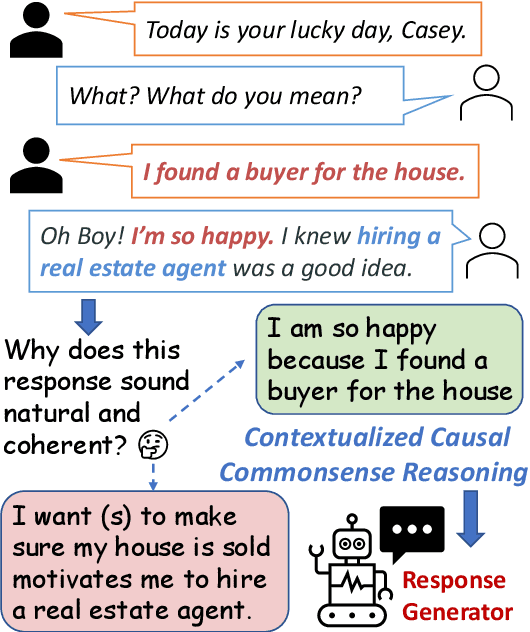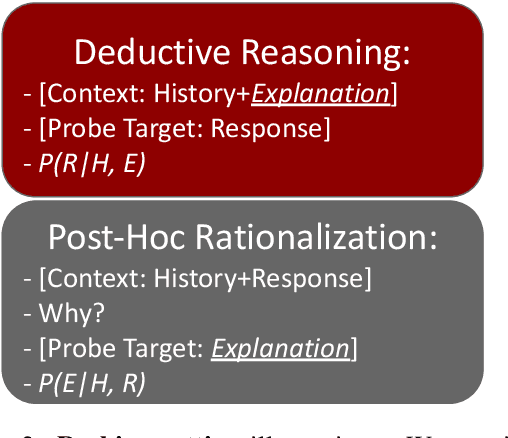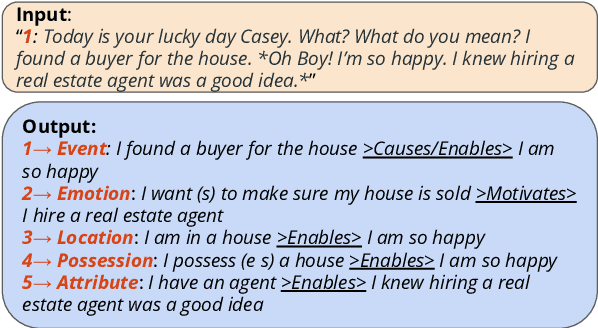Probing Causal Common Sense in Dialogue Response Generation
Paper and Code
Apr 21, 2021



Communication is a cooperative effort that requires reaching mutual understanding among the participants. Humans use commonsense reasoning implicitly to produce natural and logically-coherent responses. As a step towards fluid human-AI communication, we study if response generation (RG) models can emulate human reasoning process and use common sense to help produce better-quality responses. We aim to tackle two research questions: how to formalize conversational common sense and how to examine RG models capability to use common sense? We first propose a task, CEDAR: Causal common sEnse in DiAlogue Response generation, that concretizes common sense as textual explanations for what might lead to the response and evaluates RG models behavior by comparing the modeling loss given a valid explanation with an invalid one. Then we introduce a process that automatically generates such explanations and ask humans to verify them. Finally, we design two probing settings for RG models targeting two reasoning capabilities using verified explanations. We find that RG models have a hard time determining the logical validity of explanations but can identify grammatical naturalness of the explanation easily.
 Add to Chrome
Add to Chrome Add to Firefox
Add to Firefox Add to Edge
Add to Edge